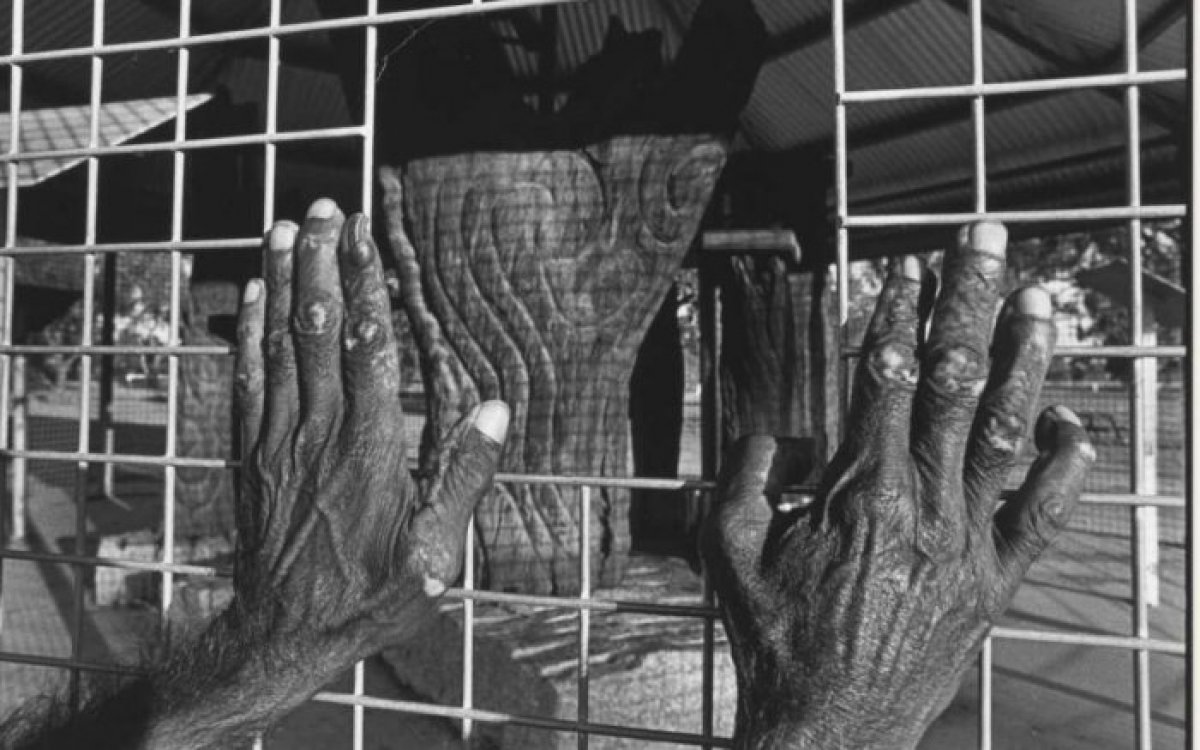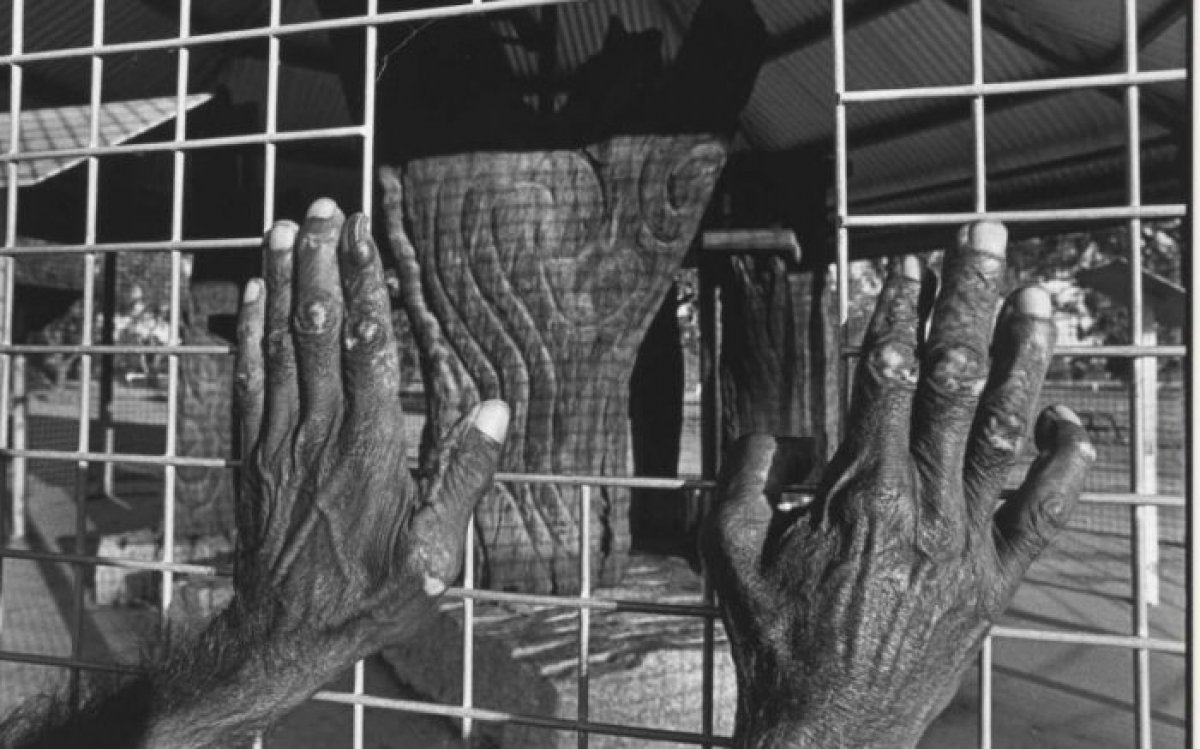
Rhodes, Jon, 1947-. (1999). Hands on the wire enclosing Gamilaraay carved trees, Collarenebri, New South Wales, 1999 [picture] / Jon Rhodes. http://nla.gov.au/nla.obj-147670361
The phrase 'a cage of ghosts' seems to have been first used by a little known French photographer in the 1890s to describe photographs he had printed from recycled glass plates. Despite his efforts to clean off the previous images, they appeared 'far more clearly' in his new prints, haunting the more recent images. When applied to Rhodes’ work, ‘cage of ghosts’ refers to the physical measures taken to protect important Indigenous cultural sites. These measures take the form of boardwalks, railings, cages, gates and grilles; large wooden constructions, fences, chains and posts; steel viewing platforms, mesh, perspex, signs, bars and locks. According to Rhodes, ‘the sites would be eventually destroyed if nothing was done to safeguard them…yet the process of protection frequently succeeds in preserving only the objects, which are now reduced in meaning, deprived of ceremonial significance and devoid of spirit’.
The phrase 'a cage of ghosts' seems to have been first used by a little known French photographer in the 1890s to describe photographs he had printed from recycled glass plates. Despite his efforts to clean off the previous images, they appeared 'far more clearly' in his new prints, haunting the more recent images. When applied to Rhodes’ work, ‘cage of ghosts’ refers to the physical measures taken to protect important Indigenous cultural sites. These measures take the form of boardwalks, railings, cages, gates and grilles; large wooden constructions, fences, chains and posts; steel viewing platforms, mesh, perspex, signs, bars and locks. According to Rhodes, ‘the sites would be eventually destroyed if nothing was done to safeguard them…yet the process of protection frequently succeeds in preserving only the objects, which are now reduced in meaning, deprived of ceremonial significance and devoid of spirit’.
Protecting Aboriginal and Torres Strait Islander sites of significance is a difficult process, and has not always been done well. As Jon Rhodes has said:
…the sites would be eventually destroyed if nothing was done to safeguard them…yet the process of protection frequently succeeds in preserving only the objects, which are now reduced in meaning, deprived of ceremonial significance and devoid of spirit.
Brainstorm with the class some of the human causes and effects of landscape degradation relating to important Aboriginal and Torres Strait islander places.
Students might consider:
- erosion and sedimentation from human traffic
- theft, damage from vandalism
- the encroachment of built elements of environments urban development, on landscapes
Ask students to find evidence of these in the Cage of Ghosts photographs.
Discuss the effects that human and natural degradation of sites of significance might have on Aboriginal and Torres Strait Islander communities.
Using a broad example, introduce the subject of tourism associated with geomorphic landforms and landscapes. The controversy around tourists climbing Uluru has been long-running. Have students briefly research differing points of view on the issue (including those of Anagu traditional owners, Australian and international tourists). Stage a whole class debate on the issue.
- What are some of the ways of protecting significant landscapes?
When applied to Jon Rhodes’ work, the ‘cage of ghosts’ refers to the physical measures taken to protect important Indigenous cultural sites. These measures take the form of boardwalks, railings, cages, gates and grilles; large wooden constructions, fences, chains and posts; steel viewing platforms, mesh, perspex, signs, bars and locks.
- Are there other types of measures that can be used to protect important cultural places?
Discuss how Aboriginal and Torres Strait Islander knowledge can best contribute to the use and management of important cultural places.
